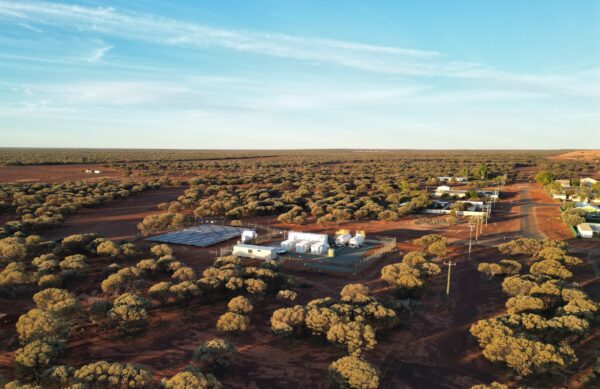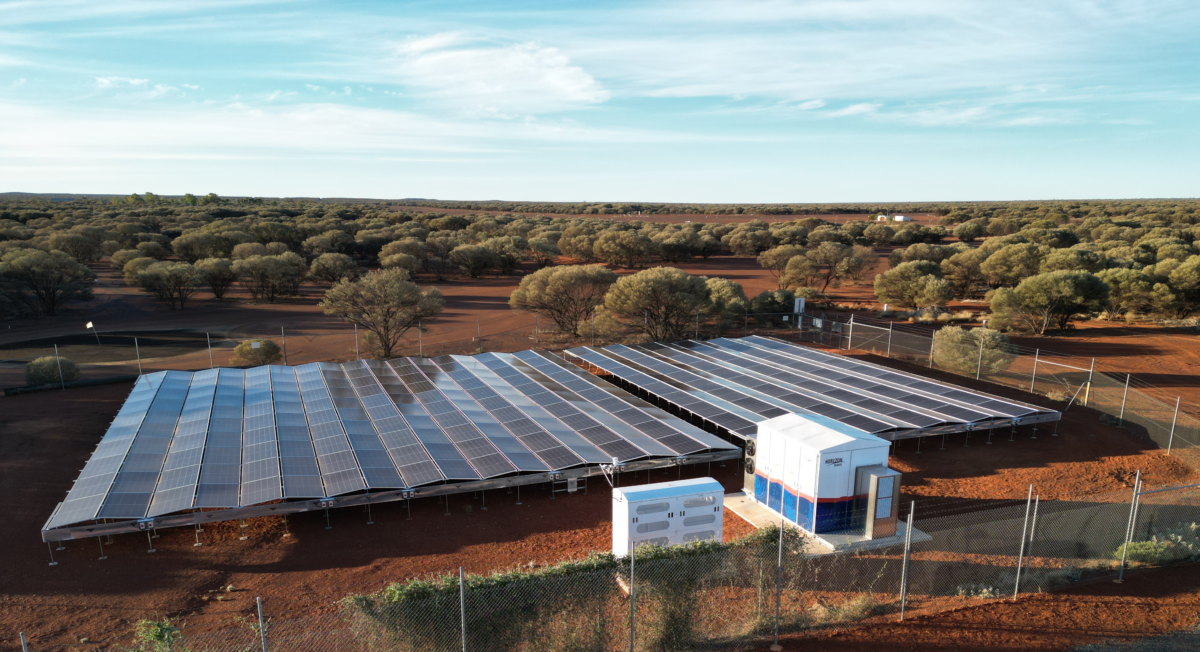Western Australia regional energy provider Horizon Power has announced that the new centralised solar farm and battery energy storage system in the town of Sandstone, about 700 kilometres northeast of the state capital Perth, is now operational following the completion of reliability testing.
Horizon said the 163 kW ground-mounted solar facility and 759 kWh battery energy storage system will provide a sustainable and efficient alternative for the town that until now has relied entirely on diesel generators for its energy needs.
The new solar and battery system will integrate with the existing diesel-fuelled power plant which will be used to ensure supply.
“The excess electricity generated by the solar panels during the day can be stored in batteries for use during the night or on cloudy days, ensuring a consistent power supply even when the sun isn’t shining,” Horizon said. “The existing diesel system can then serve as a back-up.”
The Sandstone solar and storage project is part of Horizon’s Midwest Solar Program which entails the installation of centralised solar and battery storage systems in six regional WA towns.
Solar and battery solutions have already been delivered in the Midwest towns of Wiluna and Yalgoo while similar systems are due to be installed in Cue and Meekatharra later in 2023 and in Norseman in the Goldfields in early 2024.

Horizon Chief Executive Officer Stephanie Unwin said the solar and battery installations offer an effective alternative energy solution in remote locations, providing annual operating cost savings and carbon emissions reductions.
“Towns in remote parts of Western Australia are heavily reliant on diesel for energy generation, which have high operational costs and associated emissions,” she said.
Unwin said by generating and storing their own electricity, the towns will be able to significantly reduce diesel consumption. The overall program, supported with $13.5 million (USD 8.76 million) in federal government funding, is expected to save an estimated $900,000 per annum.
This content is protected by copyright and may not be reused. If you want to cooperate with us and would like to reuse some of our content, please contact: editors@pv-magazine.com.









1 comment
By submitting this form you agree to pv magazine using your data for the purposes of publishing your comment.
Your personal data will only be disclosed or otherwise transmitted to third parties for the purposes of spam filtering or if this is necessary for technical maintenance of the website. Any other transfer to third parties will not take place unless this is justified on the basis of applicable data protection regulations or if pv magazine is legally obliged to do so.
You may revoke this consent at any time with effect for the future, in which case your personal data will be deleted immediately. Otherwise, your data will be deleted if pv magazine has processed your request or the purpose of data storage is fulfilled.
Further information on data privacy can be found in our Data Protection Policy.